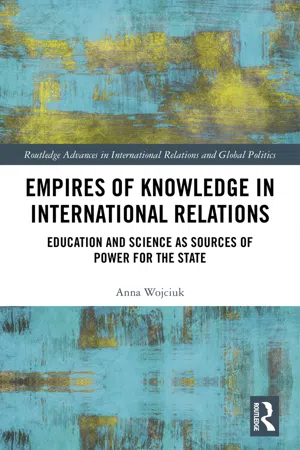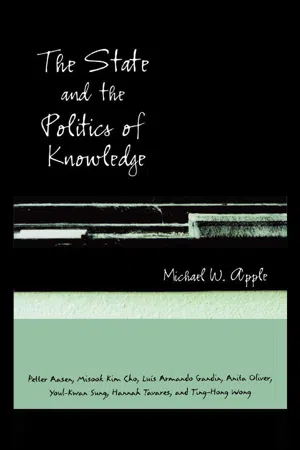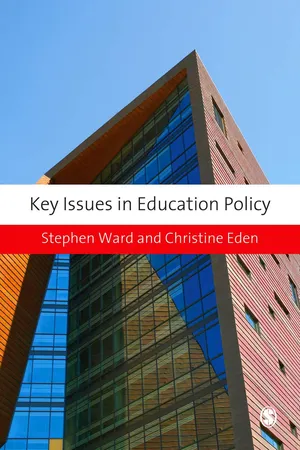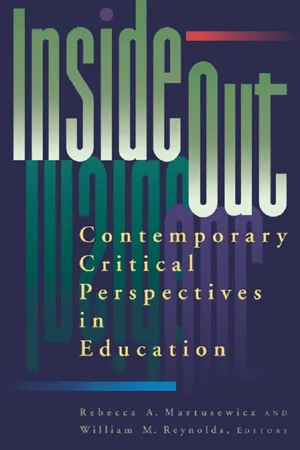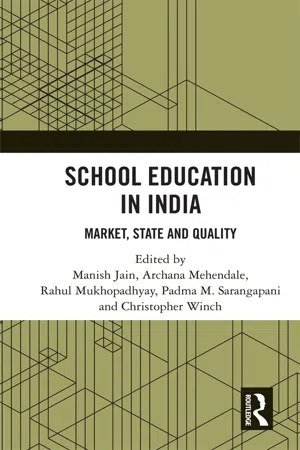Social Sciences
Education and the State
Education and the State refers to the relationship between government and the education system. It encompasses the state's role in funding, regulating, and shaping educational policies and practices. This interaction has significant implications for the quality, accessibility, and equity of education within a society.
Written by Perlego with AI-assistance
Related key terms
7 Key excerpts on "Education and the State"
- eBook - ePub
The Sociology of Education
An Introduction
- Ivor Morrish(Author)
- 2019(Publication Date)
- Routledge(Publisher)
In the study of the various relations between education and society, the sociology of education is concerned with such general concepts as society itself, culture, community, class, environment, socialization, internalization, accommodation, assimilation, cultural lag, sub-culture, status, role and so forth. It is further involved in such considerations as the effect of the economy upon the sort of education provided by the state; the social forces and determinants that effect educational and cultural change; the social institutions involved in the educational process, such as the family, the school and the church; various problems of role structure and role analysis in relation to the total social system and the micro-society of the school; the school viewed as a formal organization, involving such problems as authority, selection, the organization of learning, and streaming; questions of curriculum building and the development of sub-cultures; the relationship between social class, culture and language, and between education and occupation; and problems of embourgeoisement, democratization and elitism.In an introductory volume of this sort we can obviously do little more than acquaint the student, in the college or department of education, with the main areas in which socio-educational problems arise, and introduce him to some of the more important literature and research relevant to each topic. In general terms, the approach of the book is to work from the larger society inwards to the pupil in the school context and the classroom situation. It is hoped throughout, however, that everything that we consider will have some ultimate, if not immediate and direct, relation to the teacher and his problems.References
1 Vide Dewey, J., The School and Society (Univ. of Chicago Press, 1900), and Democracy and Education (Macmillan, 1916; reprinted 1955).2 Durkheim, E., Education and Sociology (Free Press, Glencoe, 1956), pp. 70-1. This passage is from the article, 'Education: Its Nature and Its Role', which first appeared in the New Dictionary of Pedagogy and Primary Education , published under the direction of Professor F. Buisson (Hachette, Paris, 1911). The collection of Durkheim's writings, now translated as Education and Sociology , was first published as Education et Sociologie - eBook - ePub
Empires of Knowledge in International Relations
Education and Science as Sources of Power for the State
- Anna Wojciuk(Author)
- 2018(Publication Date)
- Routledge(Publisher)
Left-leaning thinkers, in turn, highlight the persistence of social inequalities, particularly in terms of economic and cultural capital. In their view, an individual’s causative powers are far more constrained than the liberals believe them to be, and the future success or failure, rather than being a correlative of individual effort, depends strictly on the context of a person’s development. They stress the role education may play in the reproduction of social inequality, consider the different patterns by which the latter is inherited, and highlight the disparity in educational opportunities from the perspective of the organisation of school systems. In this context, though thinkers of a social-democratic persuasion tend more towards a defence of the state as a potential means to social justice through equating opportunities and establishing school systems geared towards fighting inherited inequalities, Marxist currents firmly stress that institutions of the nation-state are themselves inevitably embroiled in supporting the dominant classes. From this perspective, state education systems become a tool for symbolic, and at times even literal, social control. Leftist thinkers and scholars uncover the social conflict, fought primarily along the lines of social distinctions, within extant institutions and rules of the game, including those by which the state itself is governed. Subsumed under the state, education loses its emancipatory potential; thus, the proponents of these currents advocate resistance against the nation-state’s monopoly on intervention in education as well as engagement in efforts to establish alternative schools teaching subsequent generations to think critically on the current socio-economic situation.Émile Durkheim (1926) proposed one of the first sociological theories of the function of education in state-building processes. In his view, education had played a crucial part in societies even before the emergence of the modern state, and its guiding idea evolved through time. After all, it is society that defines its ideal of humanity, its intellectual, moral, and physical contours. To an extent, this ideal applies to all citizen: education plays a crucial part in forming homogeneous societies by disseminating supra-individual norms, rules, duties, and ways of acting. In Durkheim’s opinion, society cannot exist without a minimal degree of cohesion. Education contributes to the formation of this homogeneity and reinforces it by imposing similarities among the youth from the very beginning (Durkheim 1926: 119). It fosters social integration through cultural transmission and imposes norms without which social cohesion is unattainable. This new form of integration emerged in the wake of the dissolution of traditional communities, the weakening of ties of tradition and morality. Meanwhile, the state took on the task of strengthening new identifications. Though the creation of the community of ideas and sentiments binding the members of societies to the new political entity was not its achievement, in effect it consecrated and maintained that community after the fact. The state became involved in the transmission of the values of modernisation to individuals and in the establishment of a sense of belonging to new, large social groups, attached directly to the state. Education’s key function was thus the methodical socialisation of the young generation by its adult counterparts. - eBook - ePub
- Martin Carnoy, Henry Levin(Authors)
- 1985(Publication Date)
- Stanford University Press(Publisher)
2
Education and Theories of the State
Explicit theories of the State—explanations of how political men and women interact, individually and collectively—are lacking from most educational writing, even though public education is primarily a State function and the State has become an increasingly significant part of the production system. Such theories are the basis for understanding the role of all institutions in a society and their interrelation, including the role of education and its relation to society at large. The public sector in the United States now directly controls more than one-third of the national product, one-sixth of all jobs, and one-third of the jobs held by college graduates (Carnoy, Shearer & Rumberger 1983: Chap. 6). This massive participation is not an accident, nor is it the result of an insatiable bureaucracy. Increased State intervention, we suggest, is a product of social conflict.The present array of social welfare spending, for example, is largely the result of State responses to potential conflict during the economic crisis of the 1930’s. There has been a shift of resources from the private sector to the State, which moves conflict away from private production and into the State itself. It is no accident that the civil rights movement, the women’s movement, and the antinuclear movement—to take three prime examples of the past quarter century—have focused their activities on changing the State’s position toward minorities, women, and military spending, respectively. Even the American labor movement has grown in the last thirty years primarily through organizing public-sector unions.Education, as part of the functions of the State, is also an arena of social conflict. If the State in capitalist democracies is viewed as responsible for providing justice and equity to compensate for inequalities arising out of the social and economic system, education’s role then is seen as improving the social position of have-not groups by making relevant knowledge and certification for participation available to them. At the same time, the capitalist State and its educational system must, by their very nature, reproduce capitalist relations of production, including the division of labor and the class relations that are part of that division. The tension between reproducing inequality and producing greater equality is inherent in public schooling, just as social tension is inherent in all institutions structured according to class, race, and gender. The basis of this tension is not ideology as such, but ideology as it relates to the concrete reality of social position, material wealth, and political power. - eBook - ePub
- Michael W. Apple(Author)
- 2003(Publication Date)
- Routledge(Publisher)
In the process, approaches emerged that were considerably less reductive and essentializing and that recognized a much more complex set of contradictory relationships. These approaches have grown considerably over the years. Influenced by Gramscian frameworks, by cultural studies, by feminist and postcolonial theories, by the theoretical, empirical, and historical work of figures such as Pierre Bourdieu, Basil Bernstein, and Michel Foucault, and by other traditions, a good deal of the most creative work in critical sociological scholarship in general is now found within critical educational studies (see Apple, 1999; Arnot, 2002; Carlson & Apple, 1998; Dimitriadis & McCarthy, 2001). Some of the very best analyses on education and power have been concerned with the way the state functions. The state can be loosely defined as “a distinct ensemble of institutions and organizations whose socially accepted function is to define and enforce collectively binding decisions in the name of popular interests or the general will” (Wong, 2002, p. 1). This general definition has still required a considerable amount of conceptual, historical, and empirical work in order to go further. How do we think about the state? What role does “it” play? How is it challenged? What are the contradictory power relations within it and between the state and civil society? Perhaps the best ways of understanding and answering these questions can be found in the conceptual apparatuses developed around the concept of hegemony. As an entire range of critical scholarship has clearly demonstrated, this kind of approach can be employed creatively to uncover some of the truly major dynamics that determine the politics of education and that lead to social and cultural transformation - eBook - ePub
- Stephen Ward, Christine Eden(Authors)
- 2009(Publication Date)
- SAGE Publications Ltd(Publisher)
1 Introduction: Education and the State Parent to child after his first day at school: How did you like school today? Child: OK, but I’m not going any more. Parent: Oh, yes you are! We tend to take for granted the fact that children go to school. Some take to it immediately; others are less easily persuaded of the benefits of spending six hours a day away from home. Schooling is perhaps the most important way in which the state intervenes in the life of the family and the individual. Education does not have to depend on the state: it can happen in independent schools, at home, between friends and for individuals working alone, but since the end of the nineteenth century the state has made education its business. In this book we look at the ways in which the state in Britain has provided opportunities for all to be educated while, at the same time, affecting people’s lives with control and regulation. This chapter introduces ideas about the state and the politics of education which are then discussed as a series of topics in the following chapters. It gives a list of the key education legislation, then a brief overview of recent policy, together with a brief description of the issues in each chapter. Finally there are some suggestions about policy critique in Education Studies. The Role of the State Education is politics. It is the means by which a nation defines itself and sustains its cultural existence, transmitting beliefs, ideas and knowledge from generation to generation. Of course, parents can do this by passing on knowledge and skills to their children. But parents can only transmit the knowledge and experiences which they hold. Brighouse (2006) points out that, if the child is to flourish as an individual, there needs to be intervention and ‘discontinuity’ between experiences in the home and the child’s education. In this intervention the state and the family or community can come into conflict - eBook - ePub
inside/out
Contemporary Critical Perspectives in Education
- Rebecca A. Martusewicz, William M. Reynolds(Authors)
- 2012(Publication Date)
- Routledge(Publisher)
17The Foundations of Social Education in Historical Context
William B. Stanley & Jack L. Nelsonguiding questions
1. What are the authors trying to say or teach? 2. What is the significance of what you read here for you personally and for you as a teacher? 3. What are the perspectives drawn on by the authors to make the analysis? 4. How does this analysis help to inform our practice in classrooms?Paraphrasing the opening lines of the classic Dickens story, A Tale of Two Cities, social studies incorporates the best of times and the worst of times. This seeming paradox is suitable as an introduction to the historical contradictions and conflicts in social studies in the schools.Social education is the most inclusive of subjects, the study of all human enterprise over time and space. This comprehensiveness is humbling to an educator, but challenging. Because of the magnitude of potential content of social education, we use the term social studies to represent the more limited body of knowledge which is selected for teaching in schools. The determination of limits for social studies requires decisions about which social knowledge is most important, what skills and behaviors are most valuable, what values are most significant, and what sequence of content best fits the subject and students. As you can suspect, these battles about purpose, content, and pedagogy are among the difficult battles over social studies in the school curriculum.Social studies includes the oldest of human knowledge as well as the most recent. It involves the study of individuals and the study of the totality of humankind. It promotes both traditional stability and progressive change, and it considers radical ideas too. It suggests not only obedience but also resistance to authority. And it represents the least and the most controversial topics. Although these contradictions and conflicts make social studies difficult to understand, they also contribute to its dynamic status and make it intellectually stimulating. Where social studies is dull is where there is no conflict. Social studies includes the study of conflict and is itself the subject of conflicting views—the best and worst of subjects. - eBook - ePub
School Education in India
Market, State and Quality
- Manish Jain, Archana Mehendale, Rahul Mukhopadhyay, Padma M. Sarangapani, Christopher Winch(Authors)
- 2018(Publication Date)
- Routledge India(Publisher)
Manish Jain, drawing on political theory and feminist theory, and through a historical examination of the trajectory of the concepts of public and private in the Indian context, presents two arguments. First, that the meanings of these terms as relevant to understanding the organisation of an education system is not only economic in terms of financing of education but also importantly political – reflecting considerations in the formation of the public, the citizen and the nation. The second argument is that the meanings of the terms are neither singular nor static. Jain exposits the multiplicity of meanings, types and histories with reference to (a) the nature of the state, (b) distinct time-histories of colonial annexation, (c) levels of state, (d) changing understandings of the state’s role and responsibility with regard to mass education, accessibility, neutrality and intervention in native affairs, culture and religion levels of education, (e) geographical differences, (f) levels of education and (g) emerging Indian ‘publics’ with the rise of the national movement and other axes of self-identities. He argues that we need to avoid looking at state–non-state and public–private as mutually exclusive binaries with strong boundaries and draws attention to the value of locating public and private schools and actors in relation to larger social processes, interests and forces. Through this chapter, Jain reminds us of the value of examining both the social and political significance of the diversity of schooling and the complexity of the economic arrangements in relation to state funding and attendant regulation. Jain also draws our attention to the long history of the coexistence of not only public and privately funded education but also commercial interests in education, serving both public and private aims, in the Indian context.Christopher Winch’s chapter opens up the discussion of the education market and of education as yet another good traded in the market, with reference to the Indian context. While in developed countries, what is found is a government-sponsored quasi-market, in India, even though education activity is not meant to be for profit, we find considerations in operation that suggest that we may be looking at a genuine educational market. Winch examines both the implications of a multitiered educational market for the production of educational goods, both private and public, and criteria for assessing the relative quality of education within such a complex and hybrid system. His conceptual analysis factors in considerations of practical circumstances to be found in India as evidenced in the empirical studies such as those that form the second part of this book. Important issues that he draws our attention to include the nature of the educational good that is on sale or bought: when parents pay for education, they are buying not only ‘the opportunity to education’ but also equally the outcome of ‘becoming educated’. Both the process and the outcome have private, positional and public good elements and these are considerations for the purchaser of the good. The quality of the good may be a function of the price paid. The nature of the good may itself be differentiated and contested as parents, managements and government may have different views on what the ‘good’ is. Religious and caste-based communities could also have a strong influence on the educational good on offer. Winch argues that the need to retain the idea of the interests of the collective in relation to the education good brings to the fore the role of the state as regulator. However, he also points out that there are problems with such a proposition when the state is unable to guarantee its authority against powerful local interests.
Learn about this page
Index pages curate the most relevant extracts from our library of academic textbooks. They’ve been created using an in-house natural language model (NLM), each adding context and meaning to key research topics.

